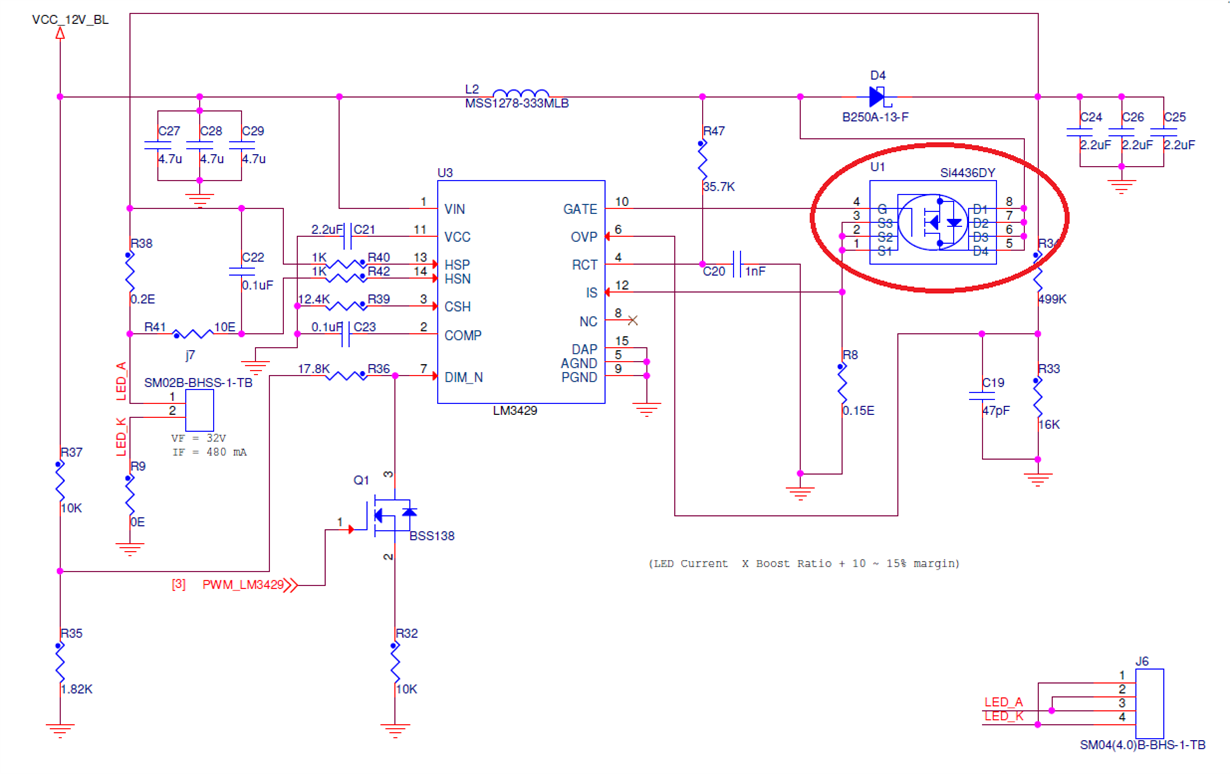Hello TI,
I have designed LED driver board using LM3429 IC. The LCD back light specification is 32V @ 480 mA. When I power on the LCD driver board, the N-channel MOSFET (U1) associated connected with LM3429 (pin number 10 & 12) getting heating. Please let us know the reason for the heating ?
Regards,
Azlum


